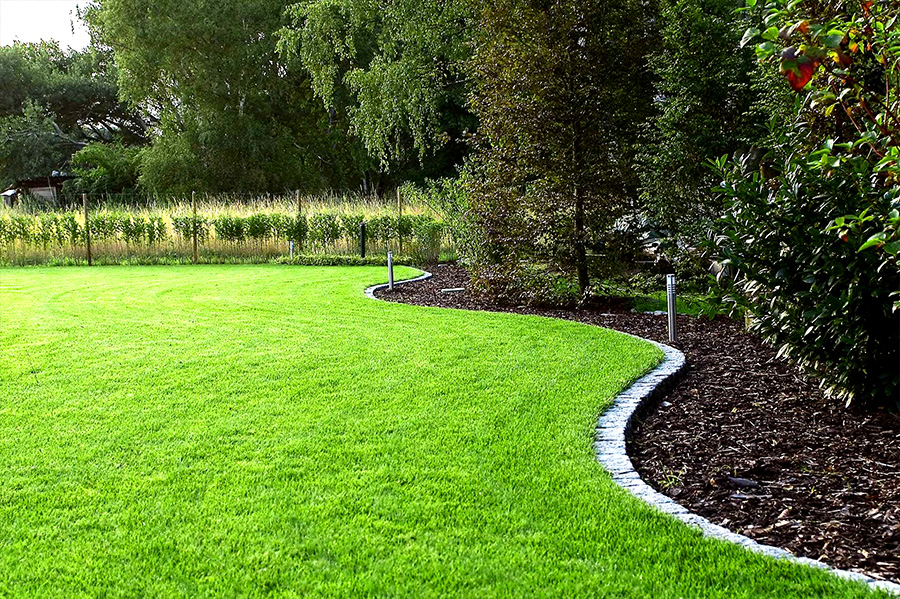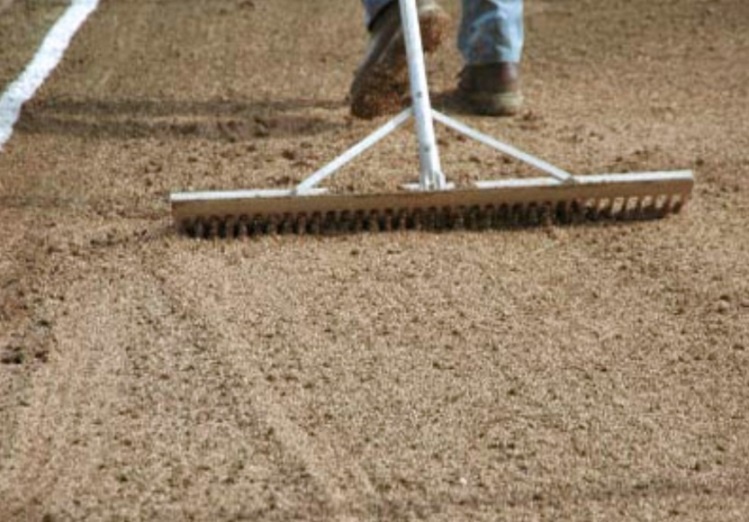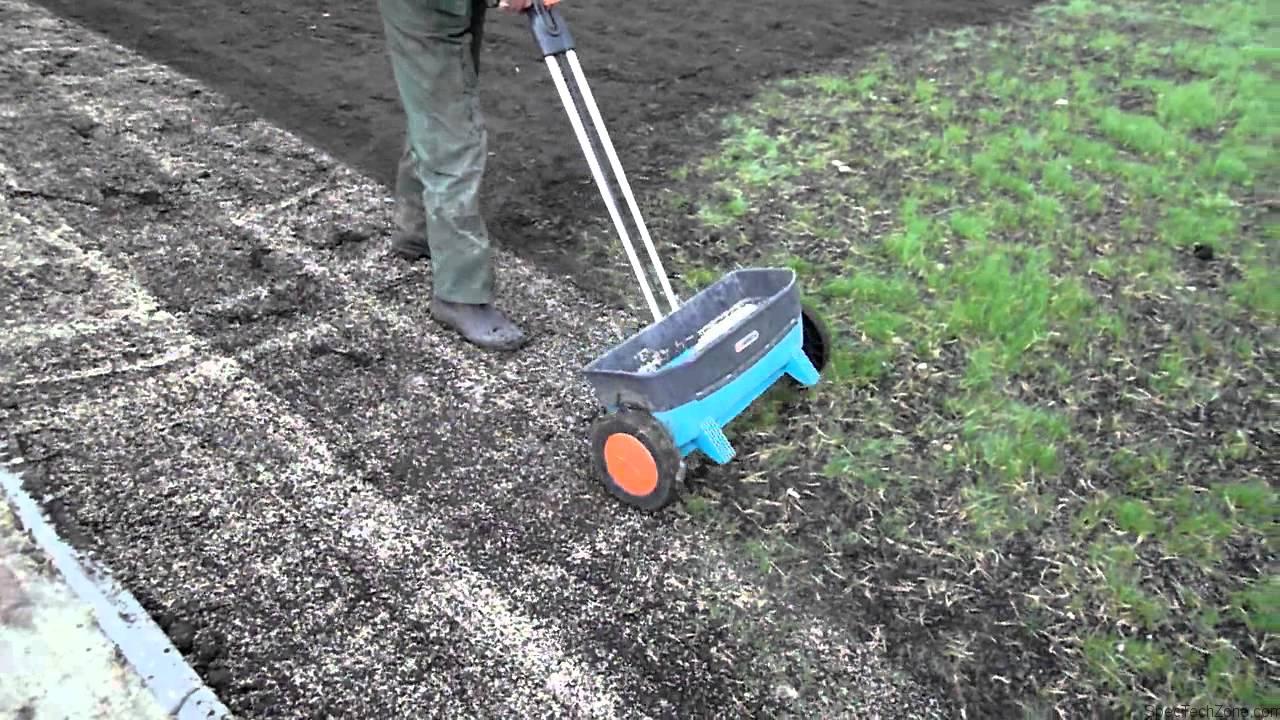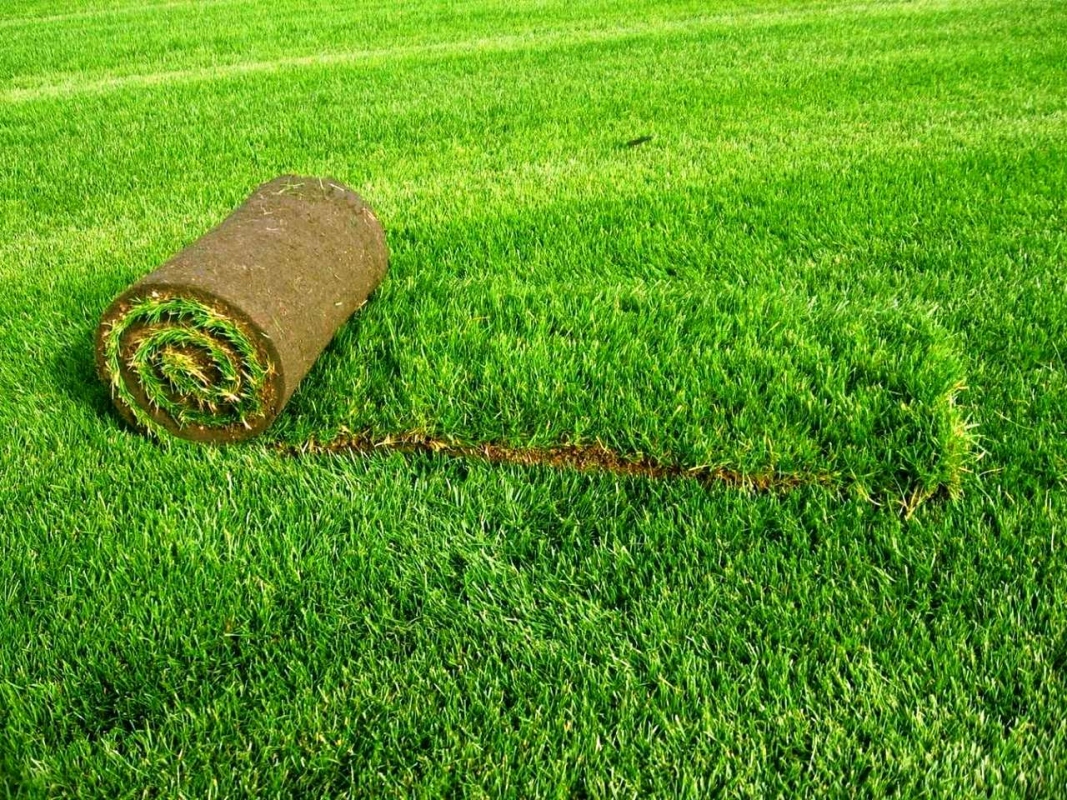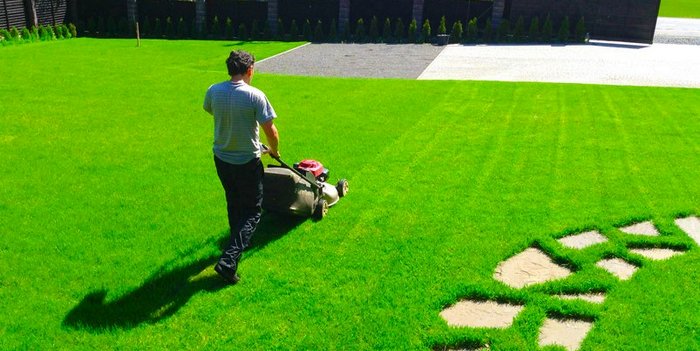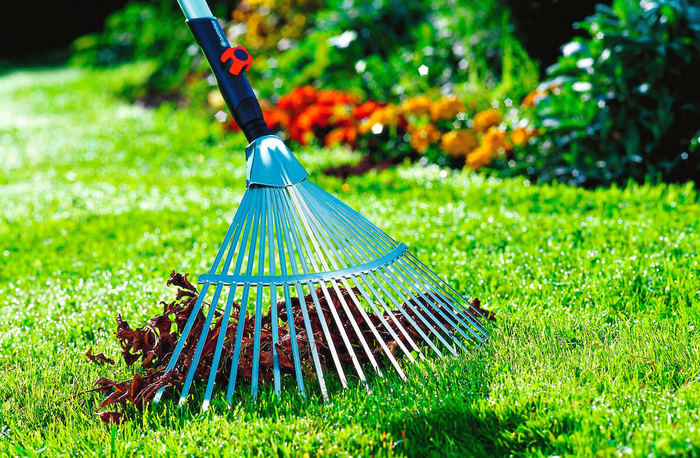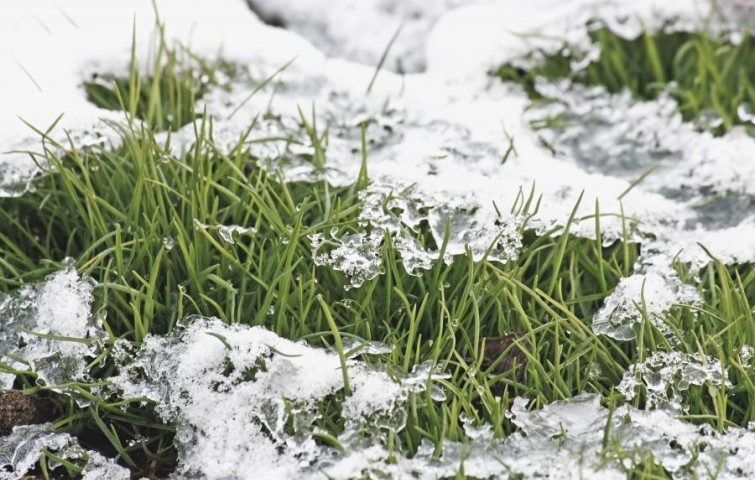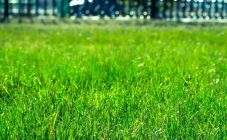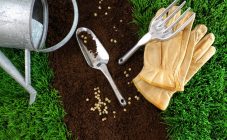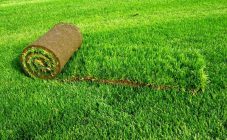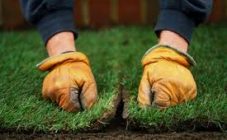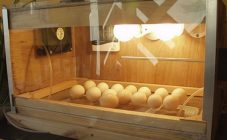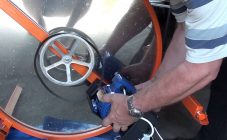Content:
Self-planting a lawn is a common method of decorating a summer cottage and garden plot. This is a relatively difficult procedure. The summer resident is required to know how to plant a lawn and how to care for it later.
Short description
The lawn is an earthen plot, the surface of which is covered with natural or artificial grass. The main component of a sown lawn is most often meadow bluegrass. A proper lawn requires regular mowing and other plant maintenance activities. To get a healthy planting, you need to know exactly how to plant and care for the lawn.
How to grow a lawn in the country with your own hands
How to properly plant a lawn
The most preferred time for how to properly plant a lawn is autumn. During this period, the air and soil are already sufficiently humidified, the air temperature drops to moderate levels, and the weeds grow weaker and slower. The combination of all these factors allows you to quickly form a full-fledged root system and accelerate the growth of shoots and stems. When sowing seeds in late August - early September, before the first frosts, you can grow lawn plantings up to 10 cm high.
Autumn planting is also good because by the spring, most gardeners have a plot not yet ready for planting. The plot must be freed from debris and rubbish and properly prepared the soil, which takes a lot of time. After that, the soil needs at least a month to rest, and only after that sowing can be carried out. However, they try not to plant the lawn in summer, since in arid conditions the seeds germinate much worse. As a result, the sowing dates are shifted one way or another towards autumn.
Grass mixtures for lawn planting include several types of grasses that have similar requirements for cultivation conditions. In this regard, plant seeds should be sown at least 40 days before frost. This is how much time it usually takes for grasses to germinate seeds, fully rooted in the soil and reach normal plant heights. In central Russia and the Moscow region, it is recommended to complete the sowing of seeds by September 10, in exceptional cases the date may be shifted to September 25. Sowing later is impractical, since the plants will still not have time to grow normally and will eventually freeze.
Soil preparation
Once you've decided how to plant your lawn, you should properly prepare the soil. Even in the summer, the soil on the plot is thoroughly leveled and tamped tightly. There should be no bumps or holes in the field. The bumps will subsequently interfere with the normal mowing of the grass mass, and the depressions will accumulate excess liquid, which will subsequently provoke plant decay.
Planting a lawn and caring for your own hands is impossible without first destroying weeds. This procedure will facilitate the subsequent care of the lawn grass and will allow you to get the simultaneous emergence of plant shoots throughout the plot, preventing the area from overgrowing with weeds.On future lawn areas, the following weed control methods are used:
- Strangulation - repeated cutting of weeds for at least two years, which leads to depletion and weakening of the root system.
- Mulching - covering weeds with dense material that will block their access to sunlight.
- Herbicide application is the most common and convenient method, which involves spraying weeds with appropriate chemicals.
- Freezing - deep digging of the soil in late autumn, as a result of which the roots of the weeds die from frost.
- Provocation - the introduction of fertilizers into the soil in order to obtain weed shoots and the subsequent surface loosening of the soil.
- Soil replacement - removal of the top layer of soil up to 40 cm deep from the plot and replacing it with a new similar layer.
A week before planting seeds, a complex mineral fertilizer is scattered over the surface of the plot, in which nitrogen predominates, and then the soil is once again leveled with a rake. In order to plant a lawn, a day is selected when there will be no strong wind. The seeds are fanned out by hand and dropped first along the plot and then across. This is done in order to more evenly distribute the seed over the surface of the site.
For convenience, it is also recommended to construct a homemade seeder based on a can, at the bottom of which several through holes are made with a nail heated on fire. The container is filled with a mixture of seeds and fine sand in an equal ratio, after which sowing is carried out according to the standard scheme.
Knowing how to plant a lawn, you should determine the seeding rate of seeds. Usually it varies from 30 to 45 grams per square meter, more accurate figures are indicated on the package with seeds. From above, the seeds are embedded in the ground to a shallow depth with the help. The sown seeds are sprinkled with a small layer of peat, and then the area is rolled with a special roller for the lawn. This is done to prevent the seeds from being blown over the site by the wind.
If a small area is sown with a lawn, then as an alternative to the roller, you can use a wide board, which is placed on the soil, walked along it along it to tamp, and then shift it to another place and repeat the process. The final stage of competent planting is sprinkler irrigation.
In the fall, it rains quite often, and therefore there is no need for frequent watering. They are carried out only in case of severe drought. They try not to apply nitrogen fertilizers in the fall. Instead, they use phosphorus-potassium preparations, which increase the resistance of crops to unfavorable factors of the winter period, and also strengthen their root system.
How to grow a lawn before winter
Autumn weather can bring unpleasant surprises in the form of unexpected frosts in early fall, shortly after sowing the seeds. To reduce the risk of plant destruction, they practice planting seeds in late autumn, after the soil has time to freeze. The procedure should be completed before the plot is covered with a stable snow cover. Seeds must be planted on a day when the air temperature is positive. Planting procedure is the same as for autumn sowing, and at the end the seeds should be mulched with peat chips.
Sowing a lawn in frozen soil also has its own disadvantages. First of all, this method is not suitable for use on slopes. In the spring, melt water will flow through them, which is able to completely wash off the entire upper soil layer along with the seeds. In addition, a positive temperature in November can last for a relatively long time, and during this time the seeds will have time to hatch and germinate. When full-fledged winter frosts come, the seedlings will certainly die. To increase the chances of plants for survival, seed should be sown at an increased seeding rate, and with the onset of spring, additional seed should be sown where the plants are frozen.
In some cases, seeds are sown in the spring. Usually, the procedure falls on the second decade of May and is carried out according to the standard procedure.
Lawn care according to the seasons
Spring
In the conditions of the Moscow region and the middle lane as a whole, the first lawn care procedures begin at the end of April. By this time, excess moisture from the soil should have disappeared, and the sod will not be waterlogged. During this period, last year's grass and other debris is removed from the site with a rake or manually. At this time, they try not to walk on the lawn, and also not to roll it up or irrigate it with anything.
Full care begins in May. When a constant positive temperature is established, and the plants reach a height of 8 cm, the first mowing of grass is carried out at a level of 5-6 cm and the cut mass is removed from the plot. Immediately after pruning, nitrogenous preparations are introduced for accelerated growth of sod. Top dressing is carried out on a not hot day, simultaneously with abundant irrigation. On the site, scarification is required to remove moss and other debris. If necessary, sanding is used on the plot, and seeds are also sown where the plants died in winter. If a roll lawn is grown, then the affected areas are cut out and replaced with new ones.
If the plantings are strongly affected by fungal diseases, they are treated with fungicides. If the plants are not too seriously affected by diseases, then this procedure is postponed until the beginning of summer. When 2-3 lawn mows have been carried out, the area is aerated by making holes up to 5 cm deep over the entire surface of the turf. If the area is damaged, a new turf is placed on it. Regrown weeds are removed mechanically.
Summer
This period is the most important for the lawn, which is reflected in the increased attention to plants. At the beginning of summer, herbs should be sprayed with herbicides in order to destroy weeds. In the second half of June, the lawn is fed with complex nutrients. Every 4-7 days, they continue to carry out regular haircuts, trying during this period not to cut the grass below 5 cm and not to grow too tall grass. Irrigation is carried out in accordance with the degree of soil moisture and the presence of precipitation.
By the middle of summer, the intensity of work is somewhat reduced and is reduced to the basic vital procedures. Abundant irrigation and mowing are continued. On the tenth of July, one more application of complex fertilizers is carried out. If there are symptoms of fungal ailments, I use fungicides. At the end of July, additional sowing of seeds is carried out on bald patches.
With the onset of August, the lawn again begins to pay increased attention. In dry weather, irrigations are still carried out, but they are gradually becoming less abundant and the daily gap between them is increasing. The lawn is mowed every week.The plantings are re-sprayed with fungicides and herbicides to protect against diseases and weeds, respectively. Nitrogen fertilizers are no longer used, but instead phosphorus-potassium fertilizers are applied. If the lawn is too weak or shows symptoms of a lack of nutritional supplements, then supplementary feeding is carried out with complex preparations, but they try to complete it by mid-August. It is allowed to re-plant the grass or replace excessively damaged turf. Be sure to carry out scarification and combing the lawn in order to clean the area from debris accumulated over the summer.
Fall
During this period, it is important to keep the lawn clean. It is important to remove fallen leaves from the site in a timely manner, since under them the risk of developing a fungal infection grows. In September, two haircuts are carried out; in October, the lawn is cut, focusing on the growth of the grass and weather conditions. The final haircut is done at the end of October, and in good weather at the beginning of November. The height of the grass should be at least 5 cm. In the presence of over-compacted or waterlogged sod due to precipitation, the plot is aerated. The procedure is carried out at the beginning of autumn, if possible, it is combined with liming and sanding.
A thorough scarification of the lawn is carried out. At the beginning of the autumn period, the plants are treated with fertilizers, which will allow the lawn to fully prepare for winter. At the end of autumn, if necessary, a podzimny overseeding is carried out.
Winter
In winter, the lawn should be protected from all external influences. At temperatures below + 5C, the growth of grass stops, and from that time on the lawn no longer walks. It will be possible to renew them only as the lawn is covered with a dense layer of snow, but in this case it is necessary to walk not too often and with caution.
In winter, after sudden temperature changes or thaws, the snow cover may disappear, and a dense ice crust will come in its place, binding the grasses. Destroy it as soon as possible with a pitchfork, rake or any other suitable tool.
Diseases and pests
In most cases, lawn plants are damaged by fungal diseases. In most cases, they are caused by improperly built lawn cultivation technology. An excess of nitrogenous substances, excessive moisture, thickened plantings, accumulation of debris most often provoke the development of diseases on the site. The fight against them, as a rule, involves the use of appropriate fungicides or homemade folk remedies. The most common lawn ailments are:
- fusarium (snow mold);
- powdery mildew;
- rust;
- red threadiness, etc.
The most dangerous lawn pests are moles, earthworms and ants. To destroy them, insecticides are used, and various repellents are used to remove moles. On lawn grasses, you can also find other harmful insects - wireworm, bread mite, Swedish fly - but they are not so harmful. In the presence of healthy turf, the damage caused by them will quickly heal.
Growing a lawn is a difficult and time-consuming procedure, but with the necessary knowledge and skills, this work is greatly facilitated. The application of time and effort will allow you to get a beautiful, dense and dense lawn at the exit, which will delight the eye of a summer resident and a gardener.
